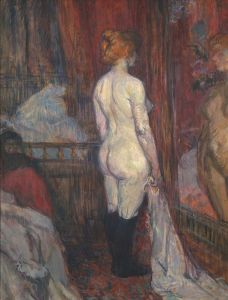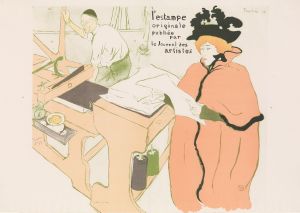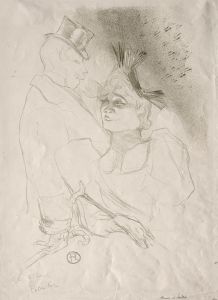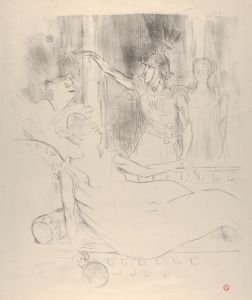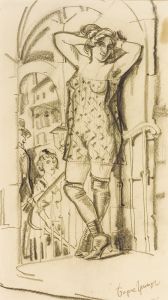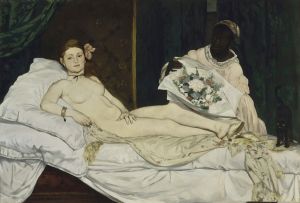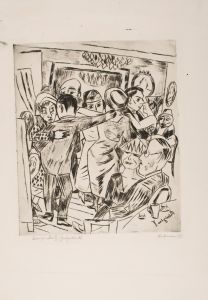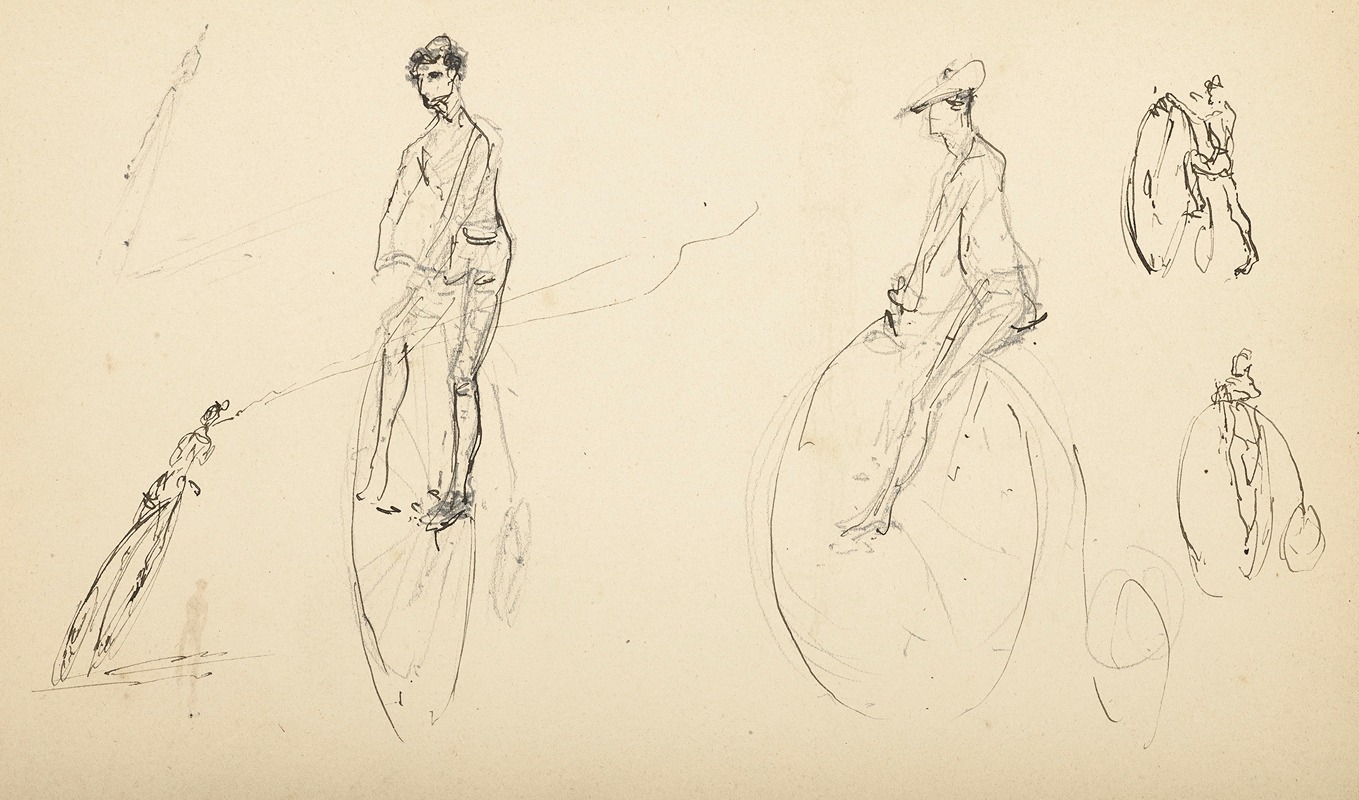
Étude de vélocipédistes
A hand-painted replica of Henri de Toulouse-Lautrec’s masterpiece Étude de vélocipédistes, meticulously crafted by professional artists to capture the true essence of the original. Each piece is created with museum-quality canvas and rare mineral pigments, carefully painted by experienced artists with delicate brushstrokes and rich, layered colors to perfectly recreate the texture of the original artwork. Unlike machine-printed reproductions, this hand-painted version brings the painting to life, infused with the artist’s emotions and skill in every stroke. Whether for personal collection or home decoration, it instantly elevates the artistic atmosphere of any space.
Henri de Toulouse-Lautrec, a prominent French painter and illustrator, is renowned for his vivid portrayals of Parisian nightlife in the late 19th century. Among his diverse body of work is the piece titled "Étude de vélocipédistes" (Study of Cyclists). This artwork reflects Lautrec's keen interest in capturing the dynamic movement and modernity of his time, particularly through the lens of cycling, which was gaining popularity during the period.
Toulouse-Lautrec was born into an aristocratic family in 1864 in Albi, France. Despite suffering from health issues that stunted his growth and left him physically disabled, he pursued a career in art with determination. He moved to Paris, where he became deeply embedded in the bohemian culture of Montmartre, a vibrant district known for its cabarets, cafes, and artistic community. This environment greatly influenced his work, leading him to create pieces that depicted the lively and sometimes decadent aspects of Parisian life.
"Étude de vélocipédistes" is a testament to Lautrec's fascination with movement and the burgeoning culture of cycling. During the late 19th century, the bicycle, or "vélocipède" as it was known in French, was a symbol of modernity and freedom. It represented a shift in transportation and leisure activities, becoming a popular pastime among the urban population. Lautrec's study captures this essence, focusing on the fluidity and grace of cyclists in motion.
The artwork is characterized by Lautrec's distinctive style, which often included bold outlines, dynamic compositions, and a keen sense of observation. His ability to convey movement and emotion with minimalistic yet expressive lines is evident in this study. The cyclists are depicted with a sense of immediacy and energy, reflecting the excitement and novelty of cycling during that era.
Lautrec's work was heavily influenced by Japanese prints, which can be seen in his use of flat colors and strong outlines. This influence is apparent in "Étude de vélocipédistes," where the simplicity of form and emphasis on movement take precedence over intricate detail. The study is not just a representation of cyclists but an exploration of the human form in motion, a theme that Lautrec revisited throughout his career.
While "Étude de vélocipédistes" may not be as widely recognized as some of Lautrec's other works, such as his posters for the Moulin Rouge, it remains an important piece within his oeuvre. It highlights his versatility as an artist and his ability to capture the spirit of his time through various subjects and themes.
Toulouse-Lautrec's contribution to art extends beyond his paintings and illustrations. He played a crucial role in the development of poster art and is credited with elevating it to a respected art form. His innovative approach and unique perspective continue to influence artists and designers today.
In summary, "Étude de vélocipédistes" by Henri de Toulouse-Lautrec is a significant work that encapsulates the artist's fascination with movement and modernity. Through his distinctive style and keen observation, Lautrec captures the essence of cycling as a symbol of freedom and progress in the late 19th century. This study not only reflects the cultural shifts of the time but also showcases Lautrec's enduring impact on the art world.







